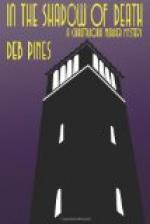How far this disaster can be attributed to General Cronje is difficult to say. The following considerations may, however, throw some light on its causes.
During the early part of the war we hardly realised the great value and necessity of good scouting. It was only after General Cronje and his men had fallen into the hands of the enemy that a regular scouting corps was organised and placed under the control of the brave Danie Therou.
Lord Roberts’s forces were almost on Cronje’s laager before they were perceived, and unfortunately they were even then entirely under-estimated and consequently thought light of. Flushed by the victory at Magersfontein, the General did not contemplate the possibility of such a bitter reverse. He was going to strike another hard blow at the enemy—he did strike it, but at too great a cost. Had he realised his position the first or second day after the siege was begun, he might still have escaped. The convoy would have been captured, but the men would have been saved. The old gentleman was determined to hold all, and consequently lost all.
So far the General deserves censure and is accountable for the disaster which had such a far-reaching and bad moral effect on the rest of the burghers. The only sweet drop contained in the bitter cup extended to us was the fact that Cronje and his burghers surrendered as men, and not as cowards. Once surrounded and brought to bay they resisted every attack with admirable fortitude and valour. Surrounded along the banks of the Modder River, at a spot where they had no cover at all, exposed to a terrific cannonade and charged by thousands of the enemy from time to time, these farmers fearlessly repelled every onslaught. It was one thing to surround them, another thing to capture them. They were not to be taken with cold hands. The enemy, especially the Canadians, had to pay a great price before the white flag announced Cronje’s unconditional surrender.
During the siege attempts were made by General De Wet to relieve Cronje, but none succeeded. Several of the relieving forces, including the pick of the Winburg Commando with Commandant Theunissen, were themselves surrounded and captured in trying to break through the lines of the besiegers.
To intensify the gloom, Ladysmith, which was daily expected to fall, was relieved on the day of Cronje’s surrender. For certain reasons the late Commandant-General P. Joubert had evacuated the positions round Ladysmith and retreated to the Biggar’s Range. General Louis Botha, who was engaging Buller’s relieving forces at Colenso, was then also compelled to retreat.




